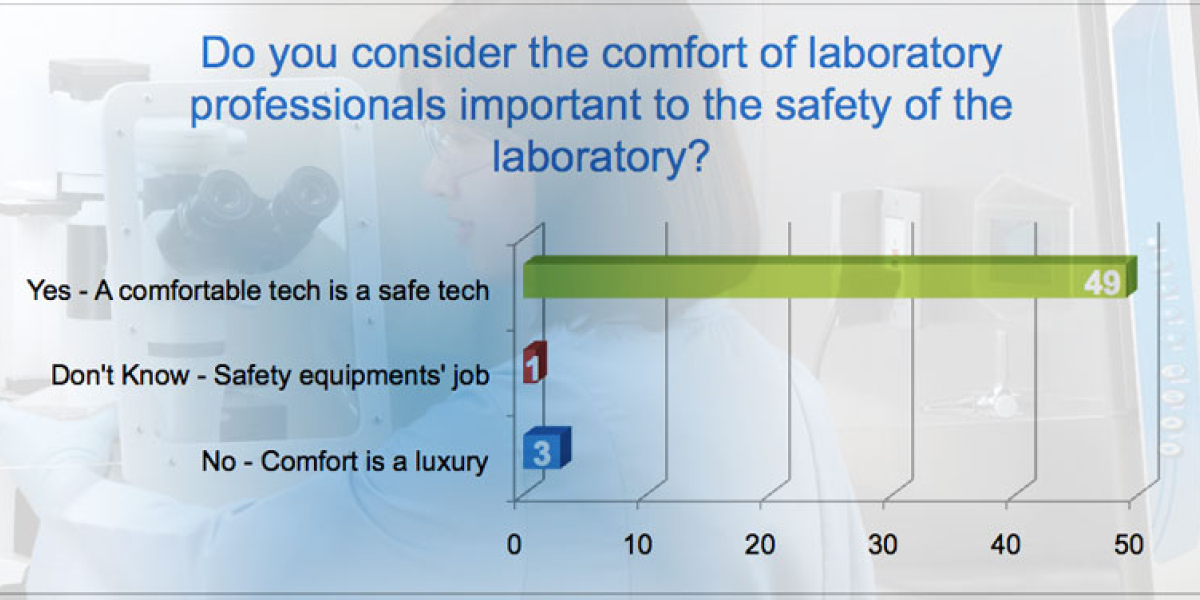Lab Comfort: Survey indicates that comfort improves safety (Part 1 of 4)

Between May and June 2013, fifty-three (53) laboratory managers and professionals were polled on LinkedIn to gauge the importance of the correlation between comfort and safety. Of those respondents, 49 (92%) indicated that comfort does increase laboratory safety.
Beyond the scope of the study, a conversation developed; Sanbyemba O. (Burkina Faso) noted that, “comfort helps carrying out duties in [the] safest and easiest manner. Discomfort leads to pains, stiffness, fatigue, … etc.” This is neither anything new, nor novel to laboratory-based professions, and there is little doubt that laboratory workers are at even greater risk due to the very nature of the substances (chemical, biological, pharmaceutical, etc.) they handle. Yet one time accidents, such as spills, are not the only risk, says another participant. According to Elizabeth G. (Rochester, NY),
“Comfort does need to be taken into account, regardless of whether you see a potential for a one-time serious injury resulting from it or not. Having someone repeatedly put themselves in an awkward position can and does lead to muscle injuries, tendonitis, arthritis, etc…”
Ray G. (New Zealand) has firsthand experience with this very kind of workplace injury. While working with nonhazardous bacteriological cultures in a Class II BSC, Ray required medical intervention on two separate occasions due to “laboratory induced pain and discomfort.” He admits that, “the distraction caused by the pain and the difficulty with process due to restricted mobility interfered markedly with [his] work;” concluding that, “yes – comfort is a necessity not a luxury…”
Though these ideas are widely accepted, and often assumed, another 4 (8%) survey respondents indicated that comfort is not an important factor in the overall safety of the laboratory’s daily routines.
Part II: Comfort Improves Productivity
By Brian Garrett, LEED Green Associate, Product Manager
As laboratory managers and business owners try to squeeze every last bit of ROI out of each project, productivity is gaining high levels of visibility. There are many factors that play in to efficiency...
Inclination™ Technology: features that reinforce what humans are inclined to do
By Scott Anthony Patterson, Web Content Supervisor
Unlike most industries and professions, the very nature of laboratory science is hazardous. Technicians and researchers handle and are in close proximity to substances, agents and materials that are inherently risky. For this reason...
| chevron_left | Part II: Comfort Improves Productivity | Articles | Video: Lyophilizer Vacuum Trouble Shooting | chevron_right |







